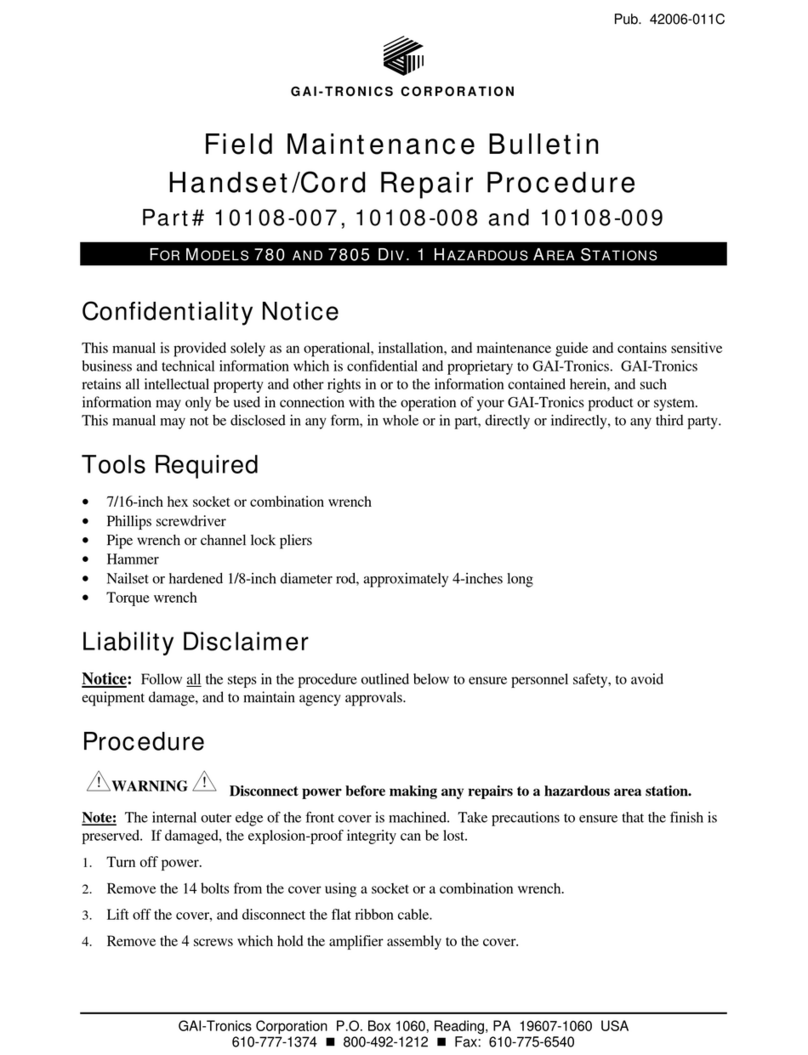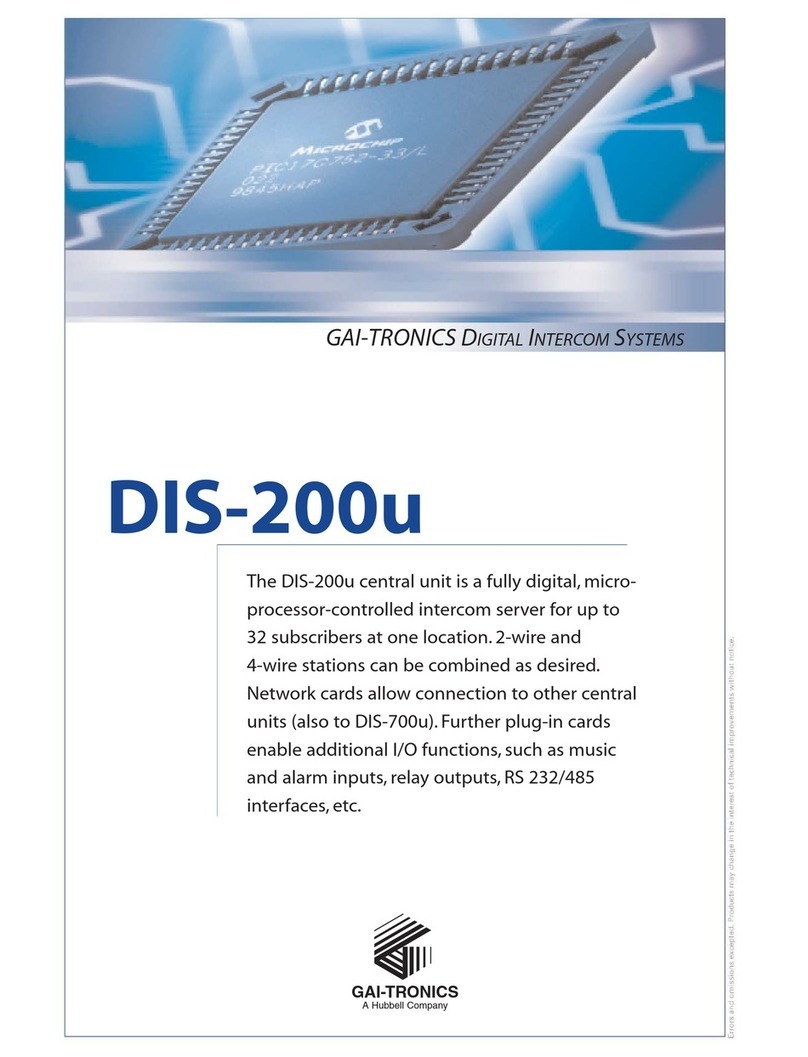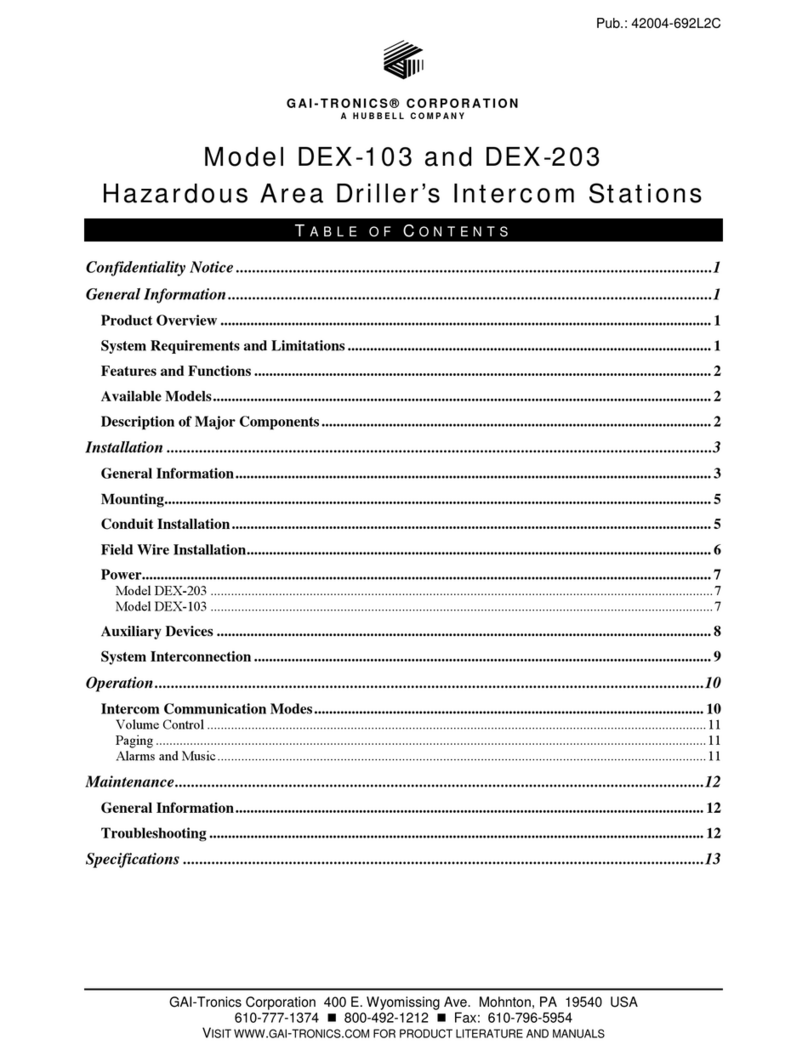
Pub. 42004-224
Page: 4of 4
k:\standard ioms - current release\instr. manuals (42004)\42004-224.doc
3/97
Setting Ring Delay
The Model 10448-202 Telephone Interface is designed to delay connection of incoming telephone ring
signals to the Centra-Page system between 1 and 8 rings. The number of ring bursts required to activate
the Telephone Interface ring repeater is set by switch S3, located on the Telephone Interface card
assembly. This assembly is located under the rear upper cover plate directly behind the front panel.
To remove the plate, loosen the two hex head screws on the top of the enclosure and remove the two
screws that secure the bottom of the plate to the Telephone Line Coupler bracket. Access to S3 can be
gained by carefully moving the cover plate to the side. Figure 2 is a detailed drawing of the printed
circuit card area around S3. S3 is factory-set for a ring delay of one (S3 Position 1 - ON). To change the
ring burst delay, turn S3 Position 1 - OFF and the appropriate S3 Position ON. The S3 position number
corresponds directly to the ring signal delay. Notes: One S3 position must be selected and only one
position can be activated at a time. When ring delay setting is complete, replace the cover plate and
screws.
OPTIONS
If the central cabinet is not in a location where the telephone interface front panel can be accessed,
remote auxiliary switches can be connected to perform the access/disconnect functions. The central
cabinet is equipped with terminal blocks to connect these auxiliary switches. For details on remote
auxiliary switch installation, please consult the instruction manual for the central cabinet.
Maintenance
TROUBLESHOOTING
The GAI-Tronics Centra-Page system is designed to function reliably. However, if problems are
encountered with the system or its components, please reference the following troubleshooting guide:
Problem Solution
No activity. Check the power connections on the Alarm Interface Panel.
No birdie tone. Check and adjust the speaker level controls for the station cards.
Adjust the birdie level inside of the Telephone Interface at
resistor R45. Check the telephone connections by plugging a
telephone subset to the telephone line.
The birdie tone works, but the
auto access to party line is not
occurring.
Check the party line connection on the Telephone Interface, the
Alarm Interface Panel, and the card cage. Make sure the
telephone subset is on the correct line for access.
Auto disconnect is not working. Check for a subset off-hook other than the one in use.
Connection drops out while
talking. Check the power supply. The connection may also drop if
someone else pages when the telephone interface is in use.
Service Restriction: Rules of the FCC applicable to registered telephone equipment allow replacement of
the printed circuit board assembly and adjustment of the option jumpers by the user or service personnel.
Component replacement may only be performed by authorized factory personnel.



























